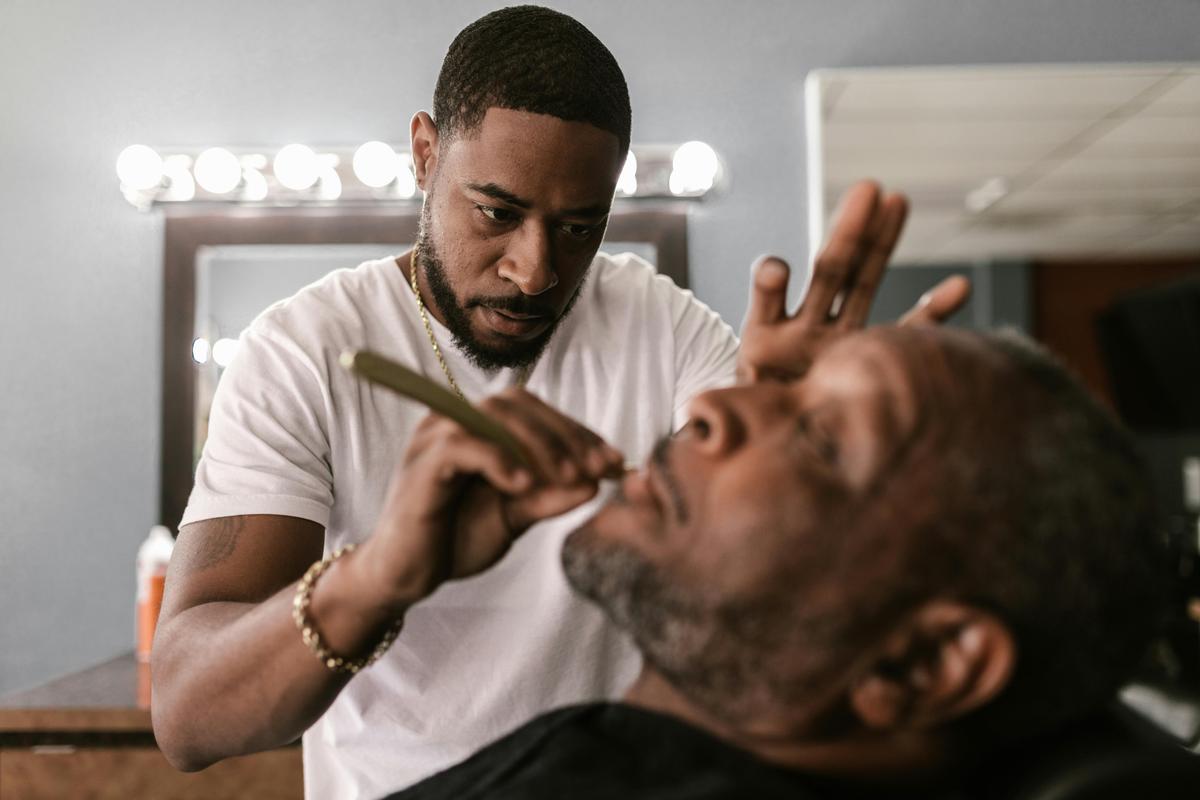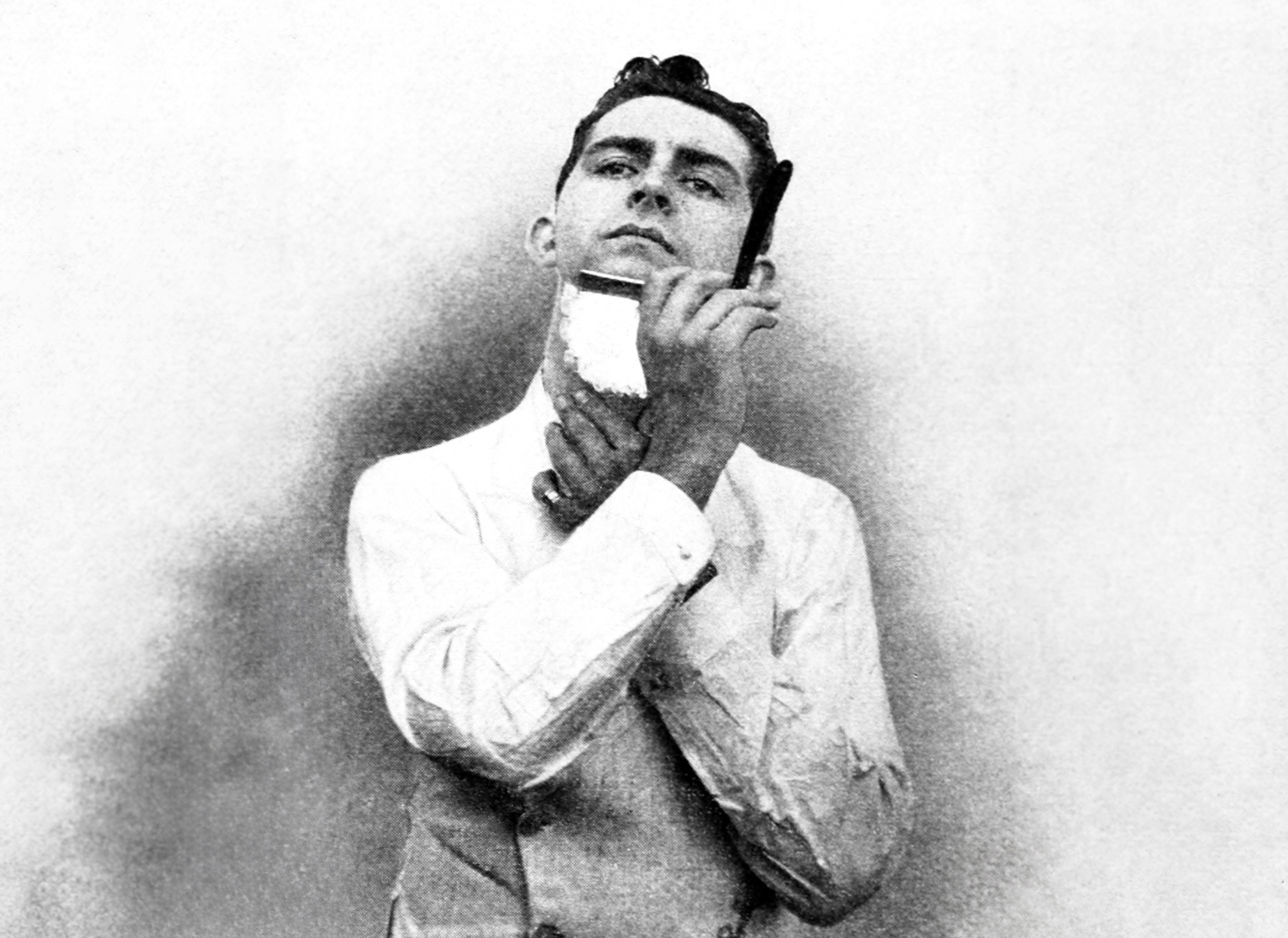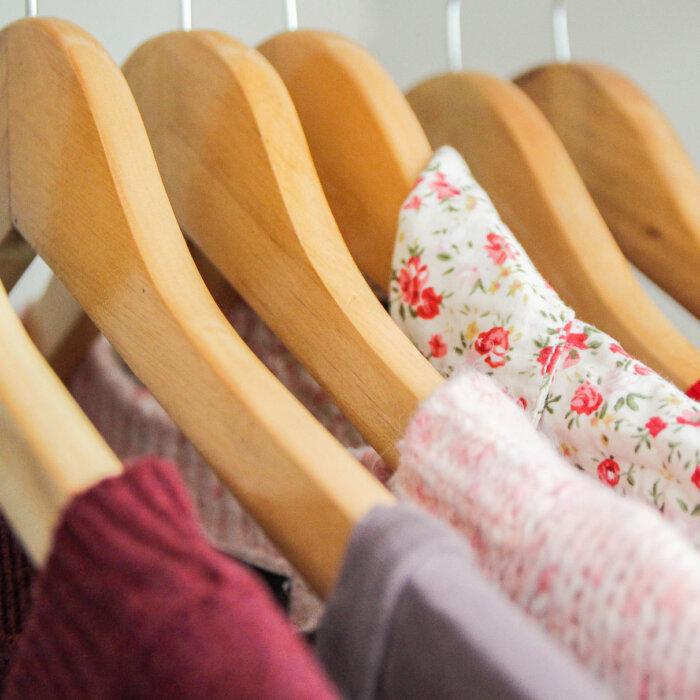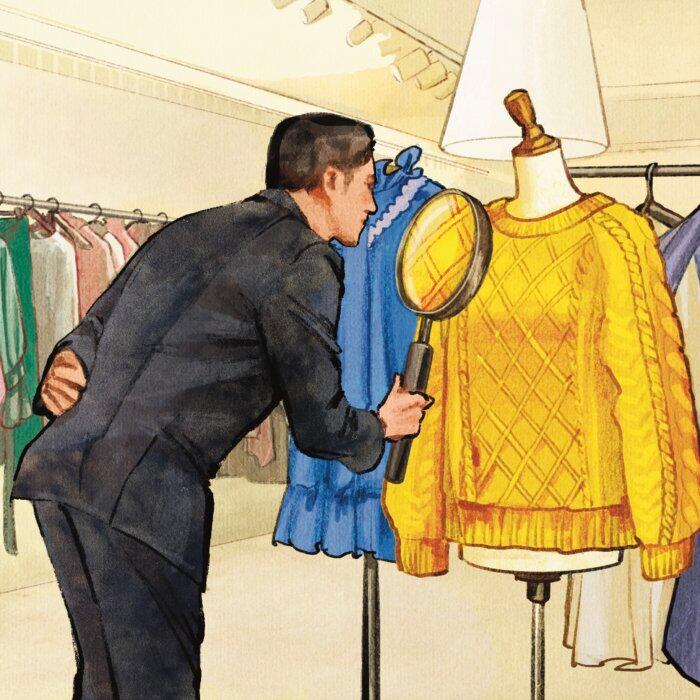Men have been searching for the perfect shave for millennia. The earliest razors have been found in fourth-millennium-B.C. Egyptian tombs—and were made of solid gold and copper.
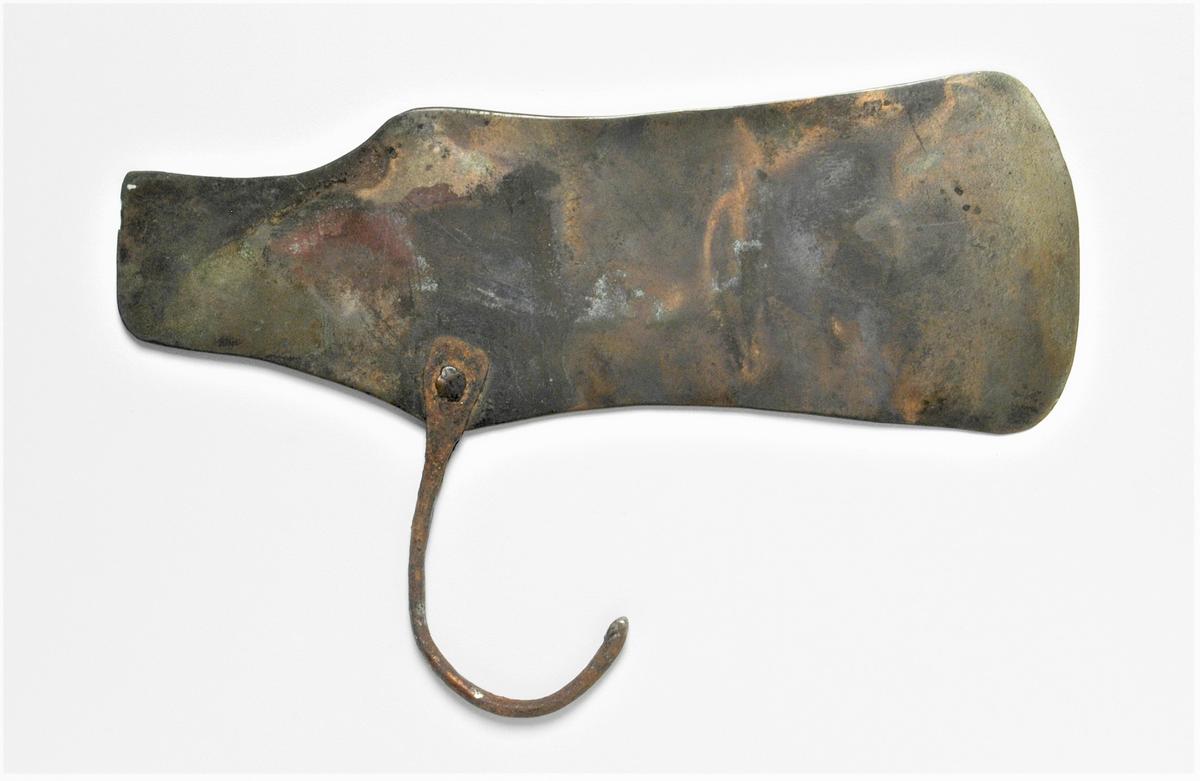
The Benefits of Using a Straight Razor
When the first steel-edged straight razors were introduced by John Spencer’s clock and cutlery company in Sheffield, England, in 1680, they were soon in high demand. This is because they were made from Sheffield steel, which gave them the ability to hold a sharp edge and resist corrosion.One of his customers contacted him to explain why he made the switch from a disposable razor to a straight razor. “He said after his daughter had completed a class project on the ‘landfill crisis’ in America, she noticed he had tossed a disposable razor in the trash,” Mr. Dodds said. “Wanting to set a positive example, he decided to switch to a straight razor. Now, he is being eco-friendly and getting a really nice, close shave.”
Ms. Donovan pointed out a third benefit to using a straight razor. ”The blade also exfoliates the skin,” she said. “The process makes the face feel great.”
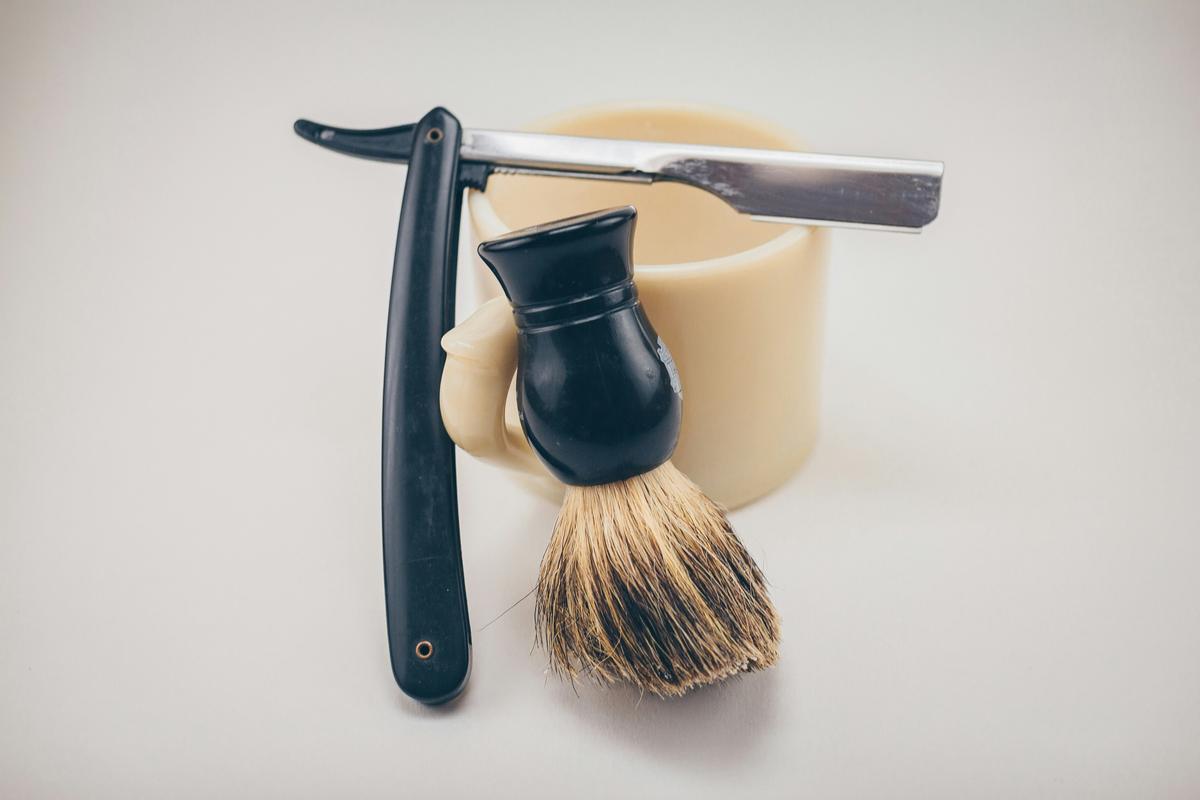
Why Did Straight Razors Become Unpopular?
Straight razors only began to fall out of favor after 1904, when King Camp Gillette patented what he called a “safety razor.” Its easily replaceable blade allowed men to shave wherever and whenever they chose and didn’t require a trip to a tradesman to be stropped and sharpened.Stropping is the process in which the edge of the straight blade is polished and the extreme edge is actually straightened to allow optimal contact with the skin. When the U.S. Army issued safety razors to soldiers in World War I so that their gas masks would conform tightly to their faces, an entire generation experienced the convenience of the new design. After the war, many soldiers kept their issued razors, making the switch permanent. Safety razors outlasted the invention of electric razors in the 1930s but started to decline in popularity after Bic introduced inexpensive disposable razors in 1974.
The trend continues today. “Our broader culture prioritizes convenience over quality,” Mr. Dodds said. “We are taught that a quick shave is important.
“The most popular cartridge razors have multiple blades. The logic is that they all interact with your skin separately, with the second and third blades cutting what the first one missed. But the reality is that an increased amount of blade contact with the face just irritates your skin.”
Cartridge razors are much more likely to yield razor bumps and razor burns compared to a straight razor. “A straight razor certainly deserves respect and needs to be used correctly,” said Mr. Dodds, “but when used as designed, it is a safe way to remove facial hair, as proven by the many hundreds of years they have been in use around the world by millions of men.”
Choosing Your Straight Razor
Most straight razors look somewhat alike, but a closer inspection reveals major differences. The main parts are the blade and the scales, also referred to as the handles. “The handle provides most of the weight, which pulls the razor along,” said Ms. Donovan. “These are most commonly crafted from wood, but some have metal, plastic, and bone handles.”She explained the main differences between the blades. “The end of the blade is called the point, and these vary widely. A Dutch point is rounded, so it is a bit more forgiving and less likely to cause nicks when used by those new to straight razors. Similarly, a thinner blade is easier to maneuver by a beginner than a thicker blade,” she said.
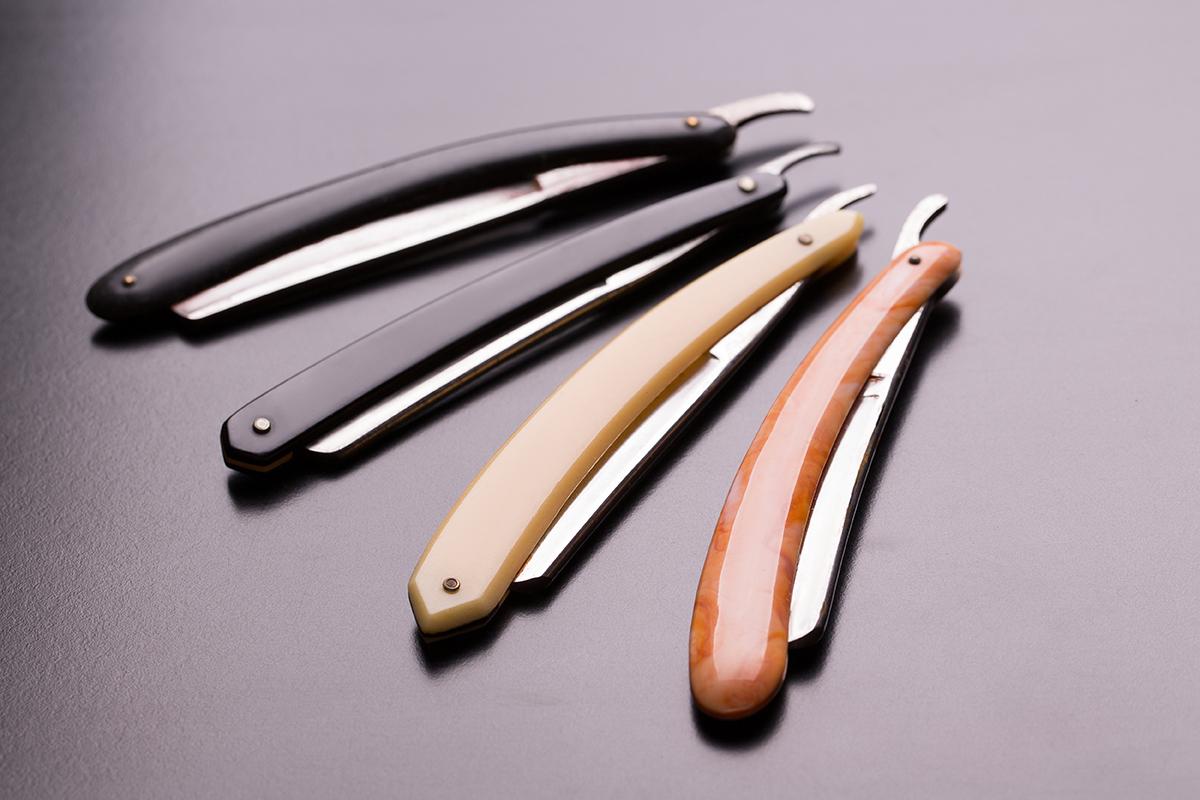
To hold the razor, Ms. Donovan said: “With the blade at a 45-degree angle from the handle, three fingers are placed over the top of the blade, with the pinky finger on the far side of the handle. The thumb goes on the bottom side of the blade, where it controls the movement of the razor.
“The goal is about a 30-degree angle between the face and the blade, allowing the weight of the handle to pull the razor along, guided by the thumb. If you hear or sense the blade is scraping, it may be at too much of an angle, requiring a slight adjustment.”
Different types of straight razors require slightly different techniques. Ms. Donovan suggested that beginners do some shopping around to find what works best for them. “The best way to choose a razor is to pick up several, choosing one that feels good in the hand,” she said. “But it’s best to do a little research into the different types and styles of straight razors, as well as the overall technique required for their use.”
For example, the metal used to craft the blades determines how long the blade can hold an edge and plays a big role in cost. Carbon steel is relatively easy to work with and is typically more affordable than stainless steel blades, which are crafted from a combination of alloys. However, stainless steel blades tend to hold an edge longer than a comparable carbon steel blade. Artisanal Damascus steel blades require a high degree of craftsmanship, hold an edge extremely well, and are usually only found on high-end razors.
Blades vary in width, from 3/8-inch to 7/8-inch. The wider the blade, the easier it is to control, making a 7/8-inch blade a good choice for beginners, while more experienced shavers and master barbers often opt for much narrower blades that can be more precisely wielded.
The grind of a blade refers to the angle of the edge. Grinds range from wedge-shaped to extra hollow. The difference comes down to how much metal is used, which, in turn, determines the weight and thickness of the blade. The narrower the blade, the more extreme the grind and the more precise the blade’s edge will be. Most production straight razors feature either a full- or half-hollow grind.
What Else You’ll Need
Electric shavers can be used by themselves in what is called a “dry shave,” but any type of blade will require hot water and, ideally, a lubricant such as shaving cream. Modern canned shaving cream or gel can be used with a straight razor, but doing so would likely cause virtual apoplexy among purists and master barbers alike. It won’t produce as good a lather—or shave—as old-fashioned shaving cream or soap. Soap often comes packaged in a can or a box, and will also need a scuttle for best results. Some shaving creams come in tubes but still need a brush for application.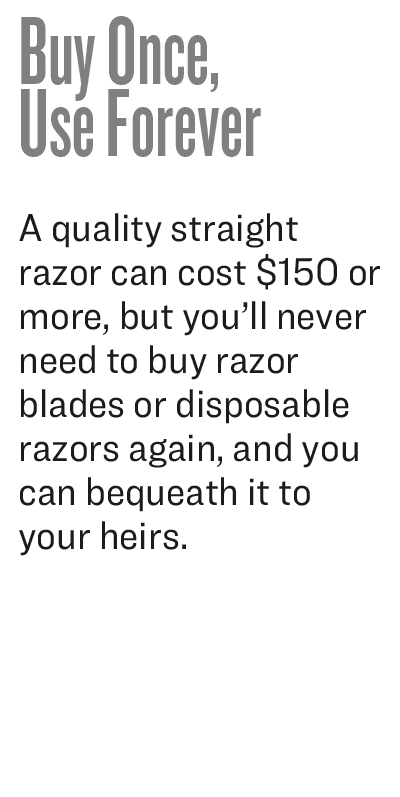
“Shaving soap or cream is designed to provide the lubrication that allows the razor to glide smoothly across the skin,” Ms. Donovan said. “Both are applied using a brush to spread evenly, which provides the added benefit of exfoliating the skin.”
For many, the act of applying shaving cream or lather to the face is the most relaxing part of a straight razor experience. The bristles of a shaving brush deliver the lather or cream, raise the hair so it can be cut cleanly, and also exfoliate the skin. The indication of the quality of the brush is its bristles and the handle—cheap brushes use basic wood or plastic handles paired with synthetic bristles. Premium brushes can feature leather, stone, resin, metal, or beautifully finished wood handles paired with badger, boar, or horse-hair bristles. The bristles are called the “knots.” Brushes are available in many shapes, sizes, and degrees of hardness.
You will also need a strop to straighten and align the extremely fine cutting edge of a straight razor. Stropping does not sharpen the razor, although it does make it more efficient. For best results, it is done before each time the razor is used, as it removes microscopic burrs from the razor that negatively affect how smoothly the blade can slide along the skin.
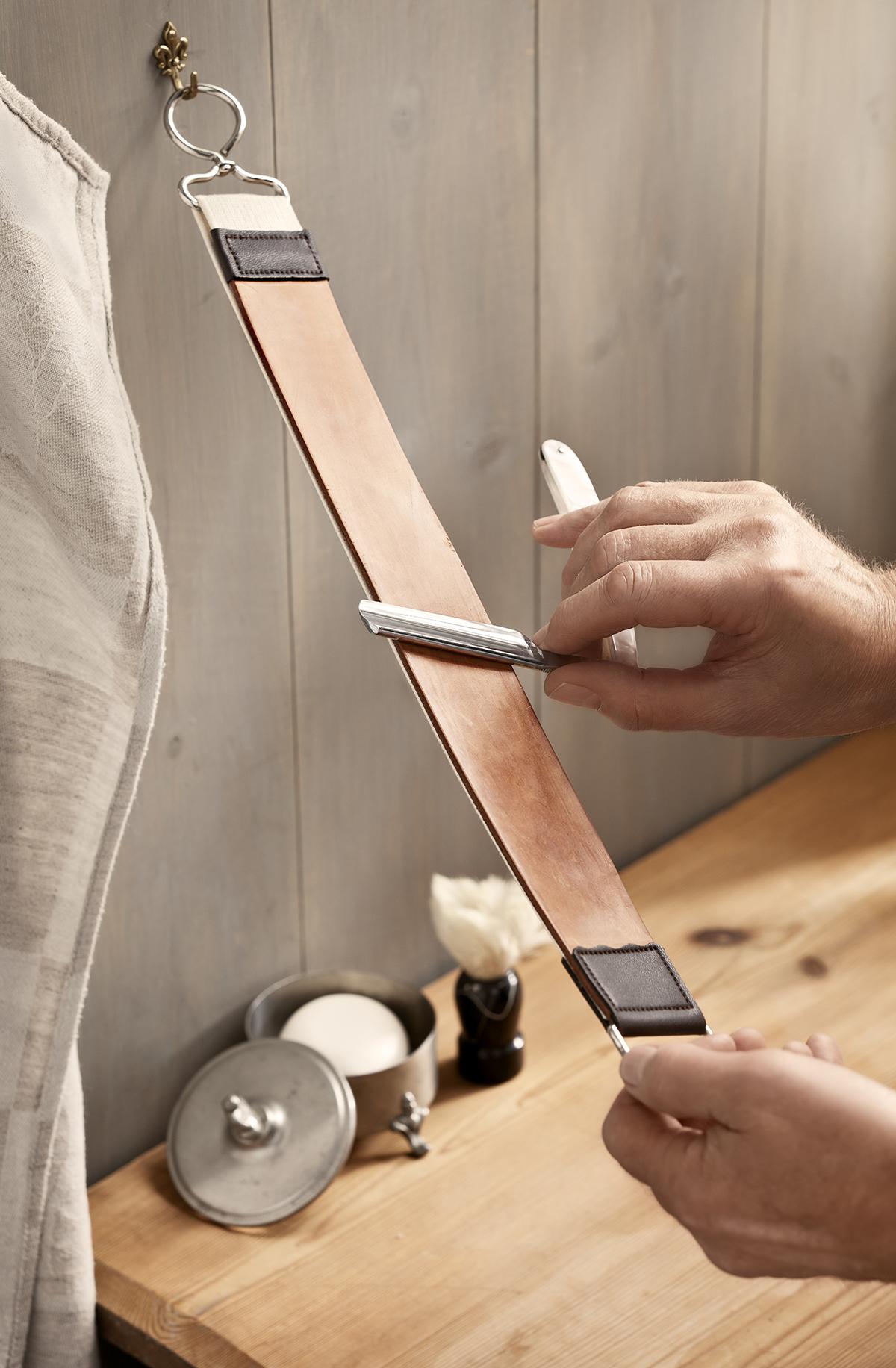
To use a strop, you can mount it on a block of wood, or purchase a “hanging” type that is often a flexible piece of leather on one side and fabric on the other side. Holding the razor, which must be completely dry, between the forefinger and thumb, lay it on the strop. First, pass it across the strop, first away from the spine, and then, after turning it over on the spine rather than the sharp edge, pass or draw it in the other direction, again toward the spine. Most users make 10 to 15 passes on the leather side, with each pass being an up-and-down motion, and then 20 to 25 passes on the fabric side.
Getting That Perfect Shave
At-home straight razor sessions should begin with a hot shower “to open the pores of the skin,” Ms. Donovan said. Then, wrap your face in a hot, wet towel for five to 10 minutes to continue preparing the skin.While you’re waiting, prepare your lubricant. If you’re using shaving soap, place it in a scuttle, add hot water, and then use the brush to create a rich lather. If you’re using shaving cream, forego the hot water and just use a brush to create a lather.
Once you’ve worked up a true lather, you’re ready to apply it to your skin. While you could use your hands, Ms. Donovan recommends opting for a brush because it spreads the foam evenly while also raising the hair for a better shave. “Starting at the sideburns,” she said, “allow the weight of the handle to glide the blade across the skin at a 30- to 45-degree angle, using short strokes with the grain.” To ensure the close shave that straight razors are known for, you’ll need to clean the blade with a towel after every stroke so that it makes perfect contact with the skin.
“Shaving with a straight razor is a relaxing ritual,” said Ms. Donovan. “It is definitely not well-suited for those who are impatient. To do it right requires at least 20 minutes, not including the five to 10 minutes required for the preparation process.”
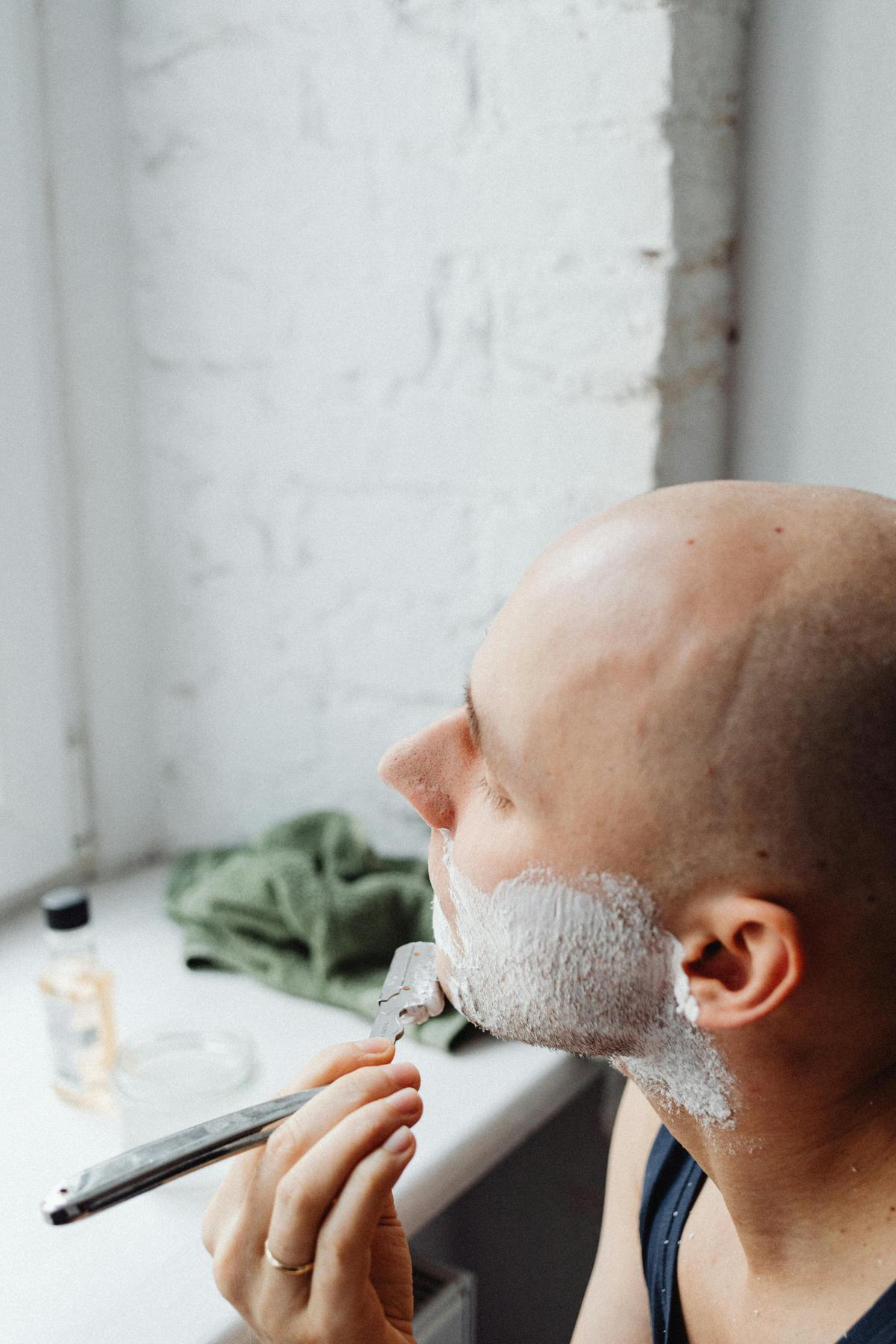
Make an Appointment
Beginners can access plenty of YouTube channels offering shaving guidance. Naked Armor’s “The Modern Art of Shaving” is another useful reference with easy-to-follow directions for a perfect shave. Mr. Dodds said it usually takes about a month of shaving with a straight razor for beginners to feel comfortable with the process.Ms. Donovan also understands how a straight razor can be a bit intimidating: “There’s no doubt they can be scary, but with patience, almost anyone can learn to use them.“ But regardless of the beginner’s levels of confidence, she suggested that “the best way to experience this type of shave for the first time is to get one from a master barber.”
Since master barbers are located in most cities, making an appointment is a great way to learn if the straight razor is your new blade of choice. You may just find yourself joining the movement of men who are embracing this old-fashioned yet high-class approach to achieving the perfect shave.
